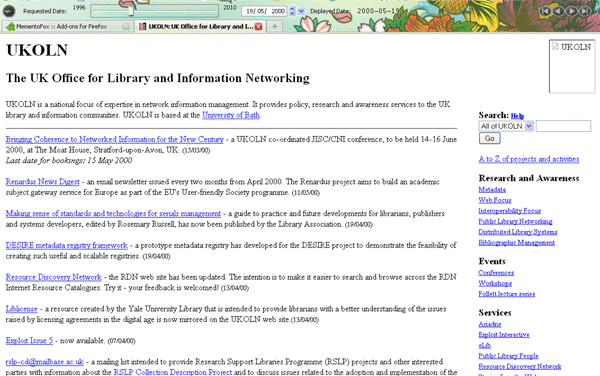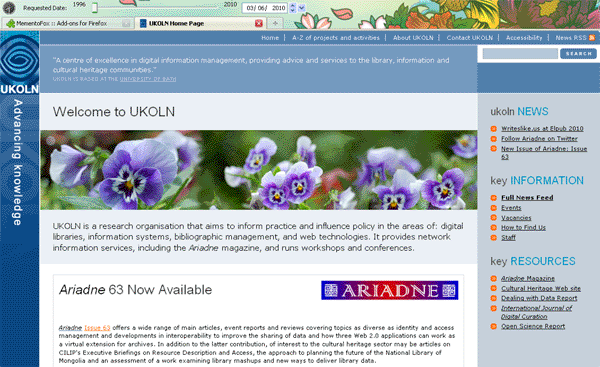Creating Open Training Materials
Posted by Marieke Guy on 24th June 2010
Yesterday I attended the Open University annual Learning and Technology conference: Learning in an open world.
I’ve talked more about my general feelings on the day in another blog post (Learning at an Online Conference) but here I want to focus in on the content of one particular session: Creating Open Courses, presented by Tony Hirst of the Open University (you can watch a playback of the session in Elluminate). During my time working on the JISC Beginner’s Guide to Digital Preservation I’ve been thinking quite a bit about what it means to create open training/learning materials and Tony’s approach struck a chord with me.
Tony’s slides are available on Slideshare and embedded below.
Tony’s talk focused around his creation of the T151 course, an OU module on Digital Worlds, part of the Relevant Knowledge programme.
Tony talked about how the OU are making their print content open through services like OpenLearn and their AV material through YouTube and iTunesU. However while this is happening the mode of production is not necessarily open and he explained that it can take several years to produce a course and it can take 5 to 10 academics 18 months to write one.
Tony wanted to move away from this approach and write the T151 course in public and virtually in real time – 10 weeks of content in 20 weeks. He did so by writing blog posts. The course actually took about 15 weeks to write.
Tony made the choice to use WordPress primarily because of the restrictions on what you can embed, in this way it is similar to Moodle (the open source VLE OU and others are familar with). This is an interesting approach. I am leaning heavily towards WordPress for the final delivery of the Beginner’s Guide (primarily due to time restraints and the fact that I already have experience using WordPress). The restrictions are sometimes a hinderance to me rather than a benefit! Another reason he chose WordPress was it “gives you RSS with everything“, agreed, this can be a real bonus.
Tony then wrote blog posts on series of topics according to a curriculum developed with other academics. He used a FreeMind mind map to get his ideas down and then each blog post was made up of 500-1000 words and took 1-4 hours to write. The end result would take students 10 minutes to 1 hour to work through. Within his posts Tony embedded YouTube movies and other external services. The end result was not a single fixed linear narrative but an emergent narratives. He used GraphViz visualisation to show reverse trackbacks where posts reference previous posts.
The blog also contained questions, readings and links to other relevant content. The idea of this was that each area could be populated from a live feed maintained by someone else. Tony felt that the important thing was to allow students to explore and do (e.g use GameMaker to build a game and submit it), share (using Moodle forums) and demonstrate.
Tony wanted to get away from the idea that there’s a single route through the course and that educator is expressing the one true answer. The students were also provided with a Skunkworks area in a wiki and a FreeMind mind map of all the resources in the course. Assessment was given through short questions and a larger question: they had to write a game design document for a game. He was looking for students to have opportunities to surprise.
In the Q&A Tony talked about how he had written the course while trying to do 101 other things at the same time and how a lot of the course chunks he would write for multiple reasons – this seems to be the approach I’m currently taking. Tony concluded by saying that creating the course was a travelogue in part and was his journey through that material.
How good to hear the approach that I’m currently taking (or trying to take) being endorsed!
Tony has written more about his approach on http://blog.ouseful.info and is very vocal on Twitter as @psychemedia.
Tags: ouconf10
Posted in Events, trainingmaterials | Comments Off


